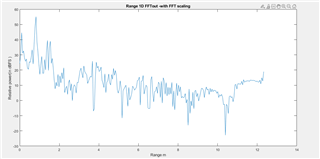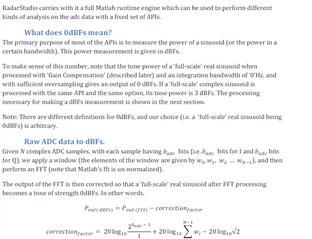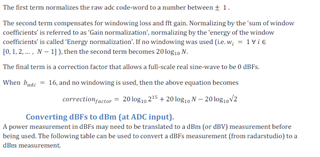Tool/software:
Dear sir/madam,
I have captured the ADC level raw Data using AWR6843ISK +DCA 1000 card and screen shots of taken from mmwave studio radar post processing tools are attached for your reference(which includes various plots,chirp parameter used for capturing, miscellaneous settings)
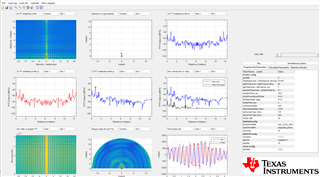
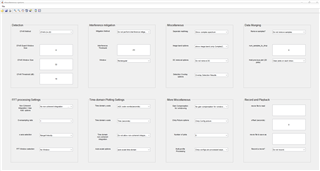
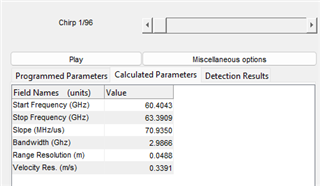
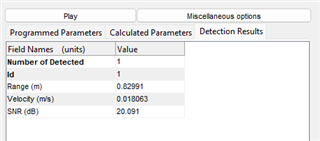
NOTE:we have captured scenario where person was sitting Infront of AWR 6843ISK card with in 1 m distance.
I try to plot using our own signal processing module using captured data but results are not matching.
My questions:
1. as per "mmWave Studio GUI(pg no :62),plot :1D FFT amplitude profile is "‘non-coherent’ sum across chirps (per frame) and across antennas". can you confirm what kind of non coherent integration is used in Radar post processing tool?
2. as per "mmWave Studio GUI(pg no :60),plot :2D FFT profile is If the ‘common’ option is selected in the channel selector, then the non-coherent-sum of the 2D FFT output across channels is plotted.can you confirm what kind of non coherent integration is used in Radar post processing tool?
2. as per "mmWave Studio GUI(pg no :67),The detection algorithm is 2D-CFAR.can you confirm whether " direct 2D-CFAR algorithm is used or 1D_CFAR for range first then followed by 1D_CFAR for doppler to realize 2D-CFAR?
3 CFAR guard window size and window sizes were used 8 and 32 ,which correspond to first CUT of 41(8+32 +1), and which equals range of 2.05 m( ie 41* 0.05(range res)).but in radar post processing tool able to detect target placed at distance of 0.9 m,how does it work?
Regards,
Mani


